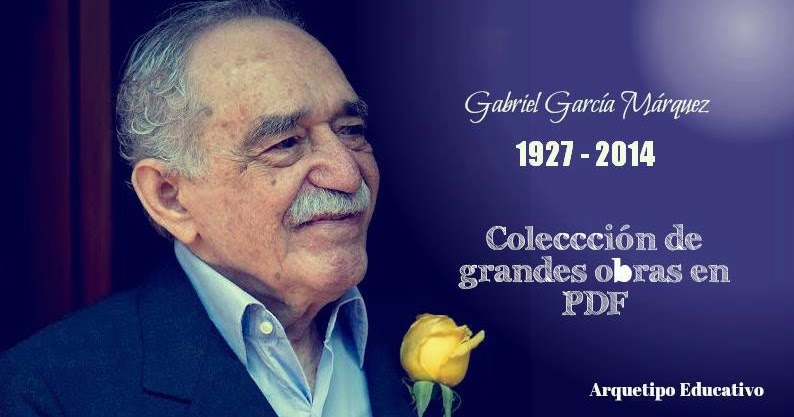El Pan De La Guerra Pdf Gratis
El Pan De La Guerra - ebookdig.biz is the right place for every Ebook Files. We have millions index of Ebook Files urls from around the world.
World War I, also called First World War or Great War, an international conflict that in 1914–18 embroiled most of the nations of Europe along with Russia, the United States, the Middle East, and other regions. The war pitted the Central Powers—mainly Germany, Austria-Hungary, and Turkey—against the Allies—mainly France, Great Britain, Russia, Italy, Japan, and, from 1917, the United States. It ended with the defeat of the Central Powers. The war was virtually unprecedented in the slaughter, carnage, and destruction it caused.
What was the main cause of World War I?
World War I began after the assassination of Austrian archduke Franz Ferdinand by South Slav nationalist Gavrilo Princip on June 28, 1914.
What countries fought in World War I?
The war pitted the Central Powers (mainly Germany, Austria-Hungary, and Turkey) against the Allies (mainly France, Great Britain, Russia, Italy, Japan, and, from 1917, the United States).
Who won World War I?
After four years of combat and the deaths of some 8.5 million soldiers as a result of battle wounds or disease, the Allies were victorious.
Why did so many people die in World War I?
World War I combat was a clash between 19th-century tactics and 20th-century technology. Imagine an American Civil War battle with large groups of men charging across open ground except the other side has heavy artillery and machine guns.
What was the significance of World War I?
Four imperial dynasties—the Habsburgs of Austria-Hungary, the Hohenzollerns of Germany, the sultanate of the Ottoman Empire, and the Romanovs of Russia—collapsed as a direct result of the war, and the map of Europe was changed forever. The United States emerged as a world power, and new technology made warfare deadlier than ever before.
World War I was one of the great watersheds of 20th-century geopolitical history. It led to the fall of four great imperial dynasties (in Germany, Russia, Austria-Hungary, and Turkey), resulted in the Bolshevik Revolution in Russia, and, in its destabilization of European society, laid the groundwork for World War II.

The outbreak of war
With Serbia already much aggrandized by the two Balkan Wars (1912–13, 1913), Serbian nationalists turned their attention back to the idea of “liberating” the South Slavs of Austria-Hungary. Colonel Dragutin Dimitrijević, head of Serbia’s military intelligence, was also, under the alias “Apis,” head of the secret society Union or Death, pledged to the pursuit of this pan-Serbian ambition. Believing that the Serbs’ cause would be served by the death of the Austrian archduke Franz Ferdinand, heir presumptive to the Austrian emperor Franz Joseph, and learning that the Archduke was about to visit Bosnia on a tour of military inspection, Apis plotted his assassination. Nikola Pašić, the Serbian prime minister and an enemy of Apis, heard of the plot and warned the Austrian government of it, but his message was too cautiously worded to be understood.
At 11:15 am on June 28, 1914, in the Bosnian capital, Sarajevo, Franz Ferdinand and his morganatic wife, Sophie, duchess of Hohenberg, were shot dead by a Bosnian Serb, Gavrilo Princip. The chief of the Austro-Hungarian general staff, Franz, Graf (count) Conrad von Hötzendorf, and the foreign minister, Leopold, Graf von Berchtold, saw the crime as the occasion for measures to humiliate Serbia and so to enhance Austria-Hungary’s prestige in the Balkans. Conrad had already (October 1913) been assured by William II of Germany’s support if Austria-Hungary should start a preventive war against Serbia. This assurance was confirmed in the week following the assassination, before William, on July 6, set off upon his annual cruise to the North Cape, off Norway.
The Austrians decided to present an unacceptable ultimatum to Serbia and then to declare war, relying on Germany to deter Russia from intervention. Though the terms of the ultimatum were finally approved on July 19, its delivery was postponed to the evening of July 23, since by that time the French president, Raymond Poincaré, and his premier, René Viviani, who had set off on a state visit to Russia on July 15, would be on their way home and therefore unable to concert an immediate reaction with their Russian allies. When the delivery was announced, on July 24, Russia declared that Austria-Hungary must not be allowed to crush Serbia.
Serbia replied to the ultimatum on July 25, accepting most of its demands but protesting against two of them—namely, that Serbian officials (unnamed) should be dismissed at Austria-Hungary’s behest and that Austro-Hungarian officials should take part, on Serbian soil, in proceedings against organizations hostile to Austria-Hungary. Though Serbia offered to submit the issue to international arbitration, Austria-Hungary promptly severed diplomatic relations and ordered partial mobilization.
Home from his cruise on July 27, William learned on July 28 how Serbia had replied to the ultimatum. At once he instructed the German Foreign Office to tell Austria-Hungary that there was no longer any justification for war and that it should content itself with a temporary occupation of Belgrade. But, meanwhile, the German Foreign Office had been giving such encouragement to Berchtold that already on July 27 he had persuaded Franz Joseph to authorize war against Serbia. War was in fact declared on July 28, and Austro-Hungarian artillery began to bombard Belgrade the next day. Russia then ordered partial mobilization against Austria-Hungary, and on July 30, when Austria-Hungary was riposting conventionally with an order of mobilization on its Russian frontier, Russia ordered general mobilization. Germany, which since July 28 had still been hoping, in disregard of earlier warning hints from Great Britain, that Austria-Hungary’s war against Serbia could be “localized” to the Balkans, was now disillusioned insofar as eastern Europe was concerned. On July 31 Germany sent a 24-hour ultimatum requiring Russia to halt its mobilization and an 18-hour ultimatum requiring France to promise neutrality in the event of war between Russia and Germany.
Both Russia and France predictably ignored these demands. On August 1 Germany ordered general mobilization and declared war against Russia, and France likewise ordered general mobilization. The next day Germany sent troops into Luxembourg and demanded from Belgium free passage for German troops across its neutral territory. On August 3 Germany declared war against France.
In the night of August 3–4 German forces invaded Belgium. Thereupon, Great Britain, which had no concern with Serbia and no express obligation to fight either for Russia or for France but was expressly committed to defend Belgium, on August 4 declared war against Germany.

Austria-Hungary declared war against Russia on August 5; Serbia against Germany on August 6; Montenegro against Austria-Hungary on August 7 and against Germany on August 12; France and Great Britain against Austria-Hungary on August 10 and on August 12, respectively; Japan against Germany on August 23; Austria-Hungary against Japan on August 25 and against Belgium on August 28.
Romania had renewed its secret anti-Russian alliance of 1883 with the Central Powers on February 26, 1914, but now chose to remain neutral. Italy had confirmed the Triple Alliance on December 7, 1912, but could now propound formal arguments for disregarding it: first, Italy was not obliged to support its allies in a war of aggression; second, the original treaty of 1882 had stated expressly that the alliance was not against England.
On September 5, 1914, Russia, France, and Great Britain concluded the Treaty of London, each promising not to make a separate peace with the Central Powers. Thenceforth, they could be called the Allied, or Entente, powers, or simply the Allies.
The outbreak of war in August 1914 was generally greeted with confidence and jubilation by the peoples of Europe, among whom it inspired a wave of patriotic feeling and celebration. Few people imagined how long or how disastrous a war between the great nations of Europe could be, and most believed that their country’s side would be victorious within a matter of months. The war was welcomed either patriotically, as a defensive one imposed by national necessity, or idealistically, as one for upholding right against might, the sanctity of treaties, and international morality.
- special coverage / archives
- July 28, 1914 - November 11, 1918
- timeline
- participants
- A naval arms race between Great Britain and the German Empire made conflict on the high seas almost inevitable.
- German success in the Franco-German War fostered a belief in the supremacy of Prussian militarism.
- Germany's annexation of Alsace-Lorraine after the Franco-German War aroused a deep longing for revenge in the French people.
- The Balkan Wars virtually eradicated the Ottoman presence in Europe, but led to violent strife among the victors.
- The assassination of Austrian archduke Franz Ferdinand by South Slav nationalist Gavrilo Princip on June 28, 1914.
- As many as 8.5 million soldiers and 13 million civilians died as a result of the war.
- Failure to deliver mandated reparations leads to the armed occupation of the Ruhr River valley region by French and Belgian troops.
- German militarists perpetuate the myth that the German Army was undefeated in battle, undermining faith in the civilian government of the Weimar Republic.
- Imperial dynasties in Austria-Hungary, Germany, the Ottoman Empire, and Russia collapsed.
- Mass movement of troops and refugees helped spread the Spanish flu, a devastating influenza pandemic that claimed as many as 50 million lives in 1918-19.
- Ottoman territories in the Middle East are divvied up among the victorious Allied powers at the Conference of San Remo.
- The League of Nations is established, but its effectiveness is hampered by the non-participation of the United States.
- key people

- related topics
- German and British soldiers called a truce on Christmas in 1914 and played a soccer game together.
- When World War 1 began in the summer of 1914, most people assumed the war would be finished by Christmas.
- The booming of the artillery at the Western front could sometimes be heard all the way back in Britain.
Click on the image of the book in the image slider to the left to request it.
Download our free eBooks (interactive PDF documents) and get started with Simulation-Driven Innovation.
In all the eBooks depicted here we kept the theoretical part as short as possible - in order to open up space for practical aspects.
Your feedback and contributions help to improve the quality of the eBooks. So please become part of our community and send your ideas to altairuniversity@altair.com
Finally, please note that these books are always Work in Progress - so make sure to have the latest version.





